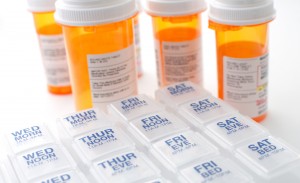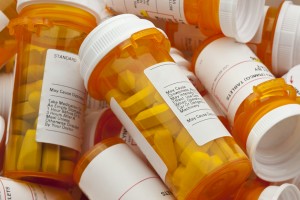 Most of us understand that the facts that give rise to the legal issues we face are sometimes sewn far in advance. This is certainly true in the area of product claims or statements. As is discussed below, careful consideration should be given to the governing regulatory framework so that the statements you make do not trigger a violation. To illustrate this, we are going to look at two examples: products coming under the purview of the Food Drug and Cosmetic Act (“FDCA”) and organic products.
Most of us understand that the facts that give rise to the legal issues we face are sometimes sewn far in advance. This is certainly true in the area of product claims or statements. As is discussed below, careful consideration should be given to the governing regulatory framework so that the statements you make do not trigger a violation. To illustrate this, we are going to look at two examples: products coming under the purview of the Food Drug and Cosmetic Act (“FDCA”) and organic products.
In recent years, consumers have increasingly sought to supplement conventional and approved over the counter and prescription medications with homeopathic treatments and even essential oils. Frequently, the companies selling these products make certain representations regarding the purpose and efficacy of such products. The statements can open a Pandora’s Box for the unwary as such products may, simply by virtue of the statements made about them, become treated as drugs under the FDCA.
A recent warning letter sent by the FDA is illustrative. Abbey St. Clare is a line of skin, hair and makeup products focusing on natural formulas.[1] On September 2, 2016, the United States Food and Drug Administration (“FDA”) sent a warning letter to Abbey St. Clare regarding some of its skin oils and soaps.[2] According to the warning letter, on its website, Abbey St. Clare claimed that one of its botanical oils minimized swelling and was “anti-inflammatory.” Abbey St. Clare provided that another oil was “useful for headaches (including migraines), insomnia, depression, stress, stiff joints, sore muscles, nervous tension, hair loss, and childbirth.”[3] The warning letter advised Abbey St. Clare that its representations on its website about certain products established the products are drugs under Sections 201(g)(1)(B) and/or 201(g)(1)(C) of the FDCA because they are “intended for use in the diagnosis, cure, mitigation, treatment, or prevention of disease and/or articles intended to affect the structure or any function of the human body.”[4] The warning letter went on to advise Abbey St. Clare to review its website, products labels, and other labeling for their products to ensure that the claims they make for their products do not reflect intended uses that cause the distribution of the products to violate the FDCA. The letter requests Abbey St. Clare to take prompt action to correct the violations to avoid a potential enforcement action. The important take away here is the mere act of making these statements caused these products to be viewed by the FDA as drugs and thus subject to the FDCA. Read more ›

 Settling a case may be the culmination of years of litigation or a strategic move at the outset to avoid litigation costs. Many times, settlement occurs at some point in between. Regardless of when the settlement occurs, it’s important to focus on certain considerations that should be part of any settlement process and the eventual agreement. Consideration of the points identified below will help ensure the creation of the most favorable agreement possible.
Settling a case may be the culmination of years of litigation or a strategic move at the outset to avoid litigation costs. Many times, settlement occurs at some point in between. Regardless of when the settlement occurs, it’s important to focus on certain considerations that should be part of any settlement process and the eventual agreement. Consideration of the points identified below will help ensure the creation of the most favorable agreement possible.



 On May 11, 2016, President Barack Obama signed the Defend Trade Secrets Act of 2016 (the “DTSA”), which provides a federal civil cause of action to manufacturers for the misappropriation of trade secrets under the Economic Espionage Act. While the DTSA substantially mirrors the protections afforded under the Uniform Trade Secrets Act, currently adopted by 48 states, the DTSA gives manufacturers a choice of whether to file in state or federal court. Importantly, the DTSA provides manufacturers with a new avenue to address a wide range of trade secret issues.
On May 11, 2016, President Barack Obama signed the Defend Trade Secrets Act of 2016 (the “DTSA”), which provides a federal civil cause of action to manufacturers for the misappropriation of trade secrets under the Economic Espionage Act. While the DTSA substantially mirrors the protections afforded under the Uniform Trade Secrets Act, currently adopted by 48 states, the DTSA gives manufacturers a choice of whether to file in state or federal court. Importantly, the DTSA provides manufacturers with a new avenue to address a wide range of trade secret issues. This week, on June 14, 2016, the FDA issued a final ruling revising its medical device and certain biological product labeling regulations to allow, for the first time, manufacturers to use graphical representations of information on its labeling without adjacent explanatory text (known as “stand-alone symbols”). The new ruling goes into effect on September 13, 2016.
This week, on June 14, 2016, the FDA issued a final ruling revising its medical device and certain biological product labeling regulations to allow, for the first time, manufacturers to use graphical representations of information on its labeling without adjacent explanatory text (known as “stand-alone symbols”). The new ruling goes into effect on September 13, 2016.
 Earlier this year Olympus Corp. (“Olympus”) announced that it would recall and redesign its TJF-Q180V duodenoscope following its link to deadly patient infections in the United States and abroad. This situation presents an important cautionary tale and one that is not strictly limited to medical device manufacturers.
Earlier this year Olympus Corp. (“Olympus”) announced that it would recall and redesign its TJF-Q180V duodenoscope following its link to deadly patient infections in the United States and abroad. This situation presents an important cautionary tale and one that is not strictly limited to medical device manufacturers.